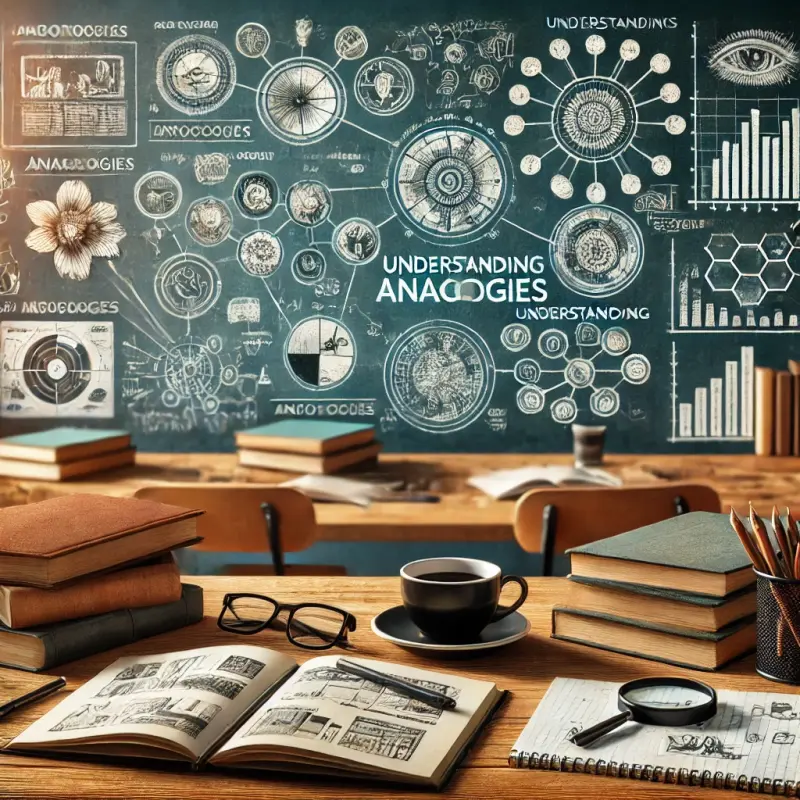How to Use Analogies to Understand New Topics: The Roles of Comparisons and Imagery in Learning

Learning new concepts can often be a daunting task, especially when the material is complex or abstract. One effective strategy for enhancing understanding is the use of analogies. Analogies allow learners to draw connections between new information and familiar ideas, making it easier to grasp difficult subjects. This article will explore the role of analogies in education, the mechanisms by which they work, and practical strategies for implementing them in your learning process.
Understanding Analogies
What Are Analogies?
An analogy is a cognitive process in which a relationship between two different things is established based on a similarity. It often involves comparing unfamiliar concepts to familiar ones, thereby facilitating understanding. For instance, saying "the heart is like a pump" draws a parallel between the function of the heart and a pump, allowing individuals to understand the heart's role in circulation by relating it to a familiar mechanical device.
The Cognitive Mechanism Behind Analogies
The effectiveness of analogies in learning stems from their ability to activate prior knowledge. When learners encounter a new concept, they can tap into their existing mental frameworks to make sense of the unfamiliar material. This process enhances comprehension and retention by creating a stronger mental connection between the known and the unknown.
The Role of Comparisons in Learning
1. Bridging the Gap
Comparisons serve as bridges between existing knowledge and new information. By relating unfamiliar concepts to familiar ones, learners can fill gaps in their understanding. This is particularly beneficial in fields such as science, mathematics, and literature, where abstract ideas often need tangible references for better comprehension.
2. Enhancing Memory Retention
Using analogies not only aids in comprehension but also enhances memory retention. When learners can associate new information with something they already know, it becomes easier to recall that information later. This is due to the strengthened neural pathways formed through repeated connections between concepts.
3. Stimulating Critical Thinking
Analogies encourage critical thinking by prompting learners to explore the similarities and differences between concepts. This analysis fosters deeper understanding and invites learners to question and evaluate the material more thoroughly. It can also lead to creative problem-solving, as learners apply their insights to new situations.
Practical Strategies for Using Analogies in Learning
1. Identify Key Concepts
Start by identifying the key concepts or ideas that you want to understand better. Break down complex subjects into smaller, more manageable parts. This will help you find appropriate analogies that resonate with your existing knowledge.
2. Create Your Own Analogies
Once you've identified the key concepts, try creating your own analogies. Think about what familiar objects or experiences could represent the new ideas. For instance, if you're learning about electrical circuits, you might compare the flow of electricity to water flowing through pipes.
3. Visualize Comparisons
Visual aids can enhance the effectiveness of analogies. Create diagrams or sketches that illustrate the relationships between the concepts. This not only reinforces your understanding but also makes the learning process more engaging.
4. Discuss with Peers
Engage in discussions with classmates or friends about the concepts you're learning. Share your analogies and ask for their perspectives. Collaborative dialogue can lead to new insights and help you refine your understanding of the material.
5. Reflect on the Learning Process
After using analogies to grasp new concepts, take time to reflect on the learning process. Consider how effective the analogies were in aiding your understanding and retention. Reflecting on your learning experiences can provide valuable feedback for future studies.
Examples of Effective Analogies in Education
1. Science
In biology, comparing the structure of a cell to a factory can help students understand cellular functions. Just as a factory has different sections working together to produce goods, a cell has various organelles performing specific tasks to maintain life.
2. Mathematics
In mathematics, teaching the concept of fractions can be made easier by comparing it to slicing a pizza. Each slice represents a part of the whole, making it more relatable and easier for students to visualize the concept of fractions.
3. Literature
In literature, authors often use analogies to convey deeper meanings. For example, comparing life to a journey can help readers understand the complexities and challenges of human experiences.
Conclusion
Analogies are powerful tools for enhancing understanding and retention of new concepts. By using comparisons and imagery, learners can bridge the gap between familiar and unfamiliar ideas, making the learning process more engaging and effective. Implementing analogies in your study routine can lead to improved comprehension, increased memory retention, and enhanced critical thinking skills. Embrace the power of analogies to unlock a deeper understanding of the subjects you encounter.
Artykuły
Zarejestruj się do naszych powiadomień, aby otrzymywać najświeższe i najbardziej interesujące artykuły bezpośrednio na swoją pocztę!